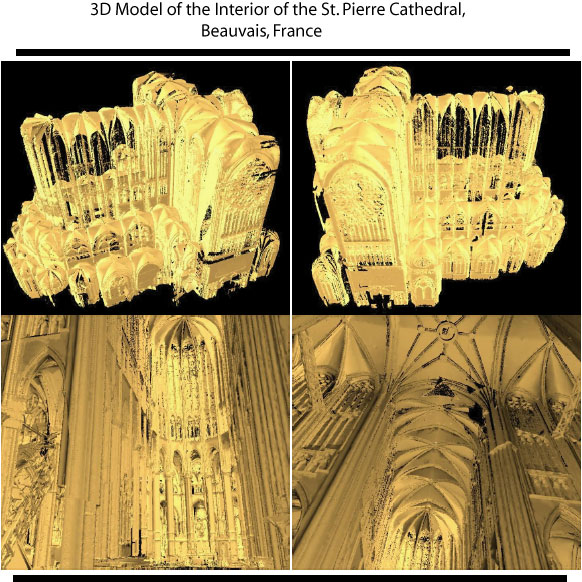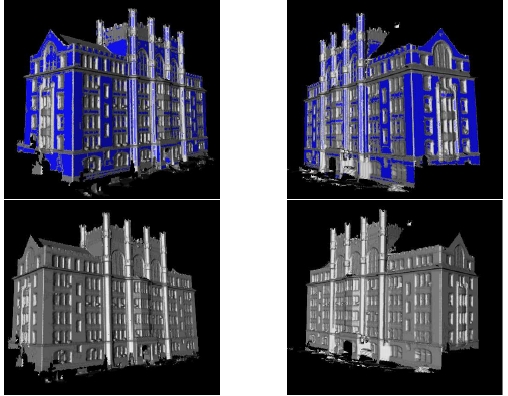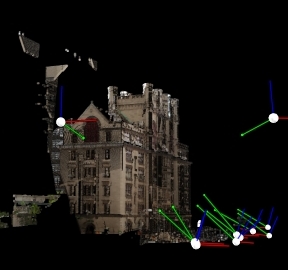



(Left) Mesh-based models of Thomas Hunter Building, NYC. (Right) Texture-mapped point-based model of same building (camera locations shown).
| Spring
2005 CSc 83010 Topics in Computer Graphics: 3D Photography Graduate Center of CUNY |
| Day/Time: Tuesdays 4:15 - 6:15pm |
| Classroom: 3306 |
| Ioannis Stamos |
| istamos@hunter.cuny.edu |
| http://www.cs.hunter.cuny.edu/~ioannis |
| PhD, MS, or advanced-undergraduate students are eligible to register |
| Course Materials and Schedule (updated regularly) |
| Link to 3D Photography course taught at the GC in Fall 2003. |





The class will be based on presentations of recent papers. The research facilities of the Vision and Graphics Laboratory will become available to registered class participants. The research of our laboratory is supported by the National Science Foundation through CAREER and Major Research Instrumentation awards.



3D Photography workshops:
3D Photography Course, SIGGRAPH 2000.
Image-Based Modeling and Rendering, SIGGRAPH 1998.
Workshop on Image-Based Modeling and Rendering, Stanford 1998.
Computer Graphics Books:
Computer Vision Books:
Introductory Techniques for 3-D Computer Vision. EmanueleTrucco and Alessandro Verri. Prentice Hall, 1998.Computer Vision and Graphics Journals:
Robot Vision. B. K. P. Horn, The MIT Press, 1998 (12th printing).
Three-Dimensional Computer Vision: A Geometric Viewpoint. Olivier Faugeras, The MIT Press, 1996.
An Invitation to 3-D Vision. Yi Ma, Stefano Soatto, Jana Kosecka, S. Shankar Sastry. Springer-Verlag, 2004.
Computer Vision A Modern approach. David S. Forsyth, Jean Ponce. Prentice Hall 2003.
Computer Vision. Linda Shapiro and George Stockman. Prentice Hall, 2001.
International Journal on Computer Vision.
Computer Vision and Image Understanding.
IEEE Trans. on Pattern Analysis and Machine Intelligence.
SIGGRAPH (http://www.siggraph.org).
